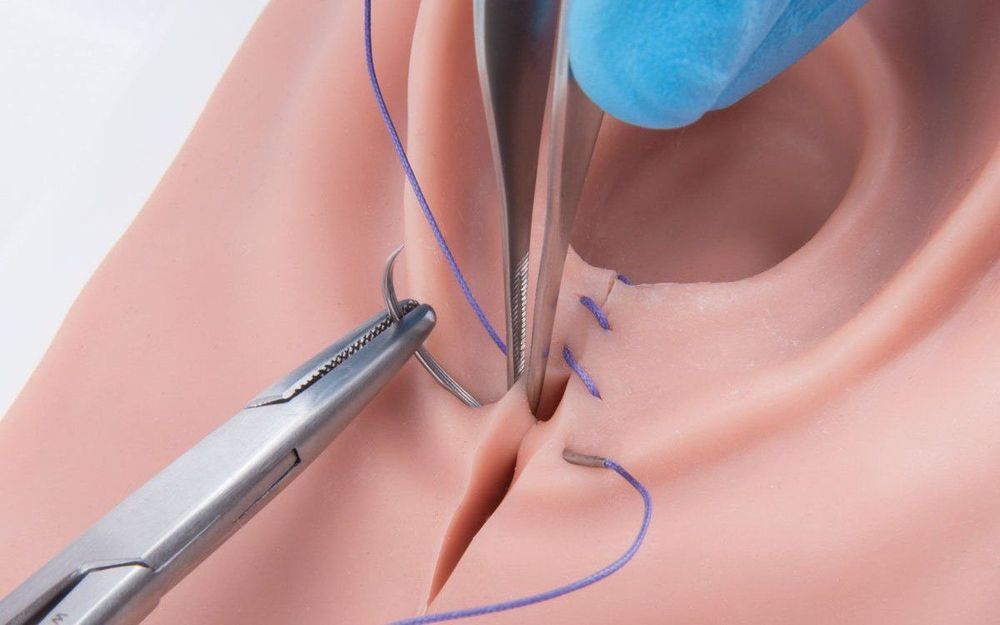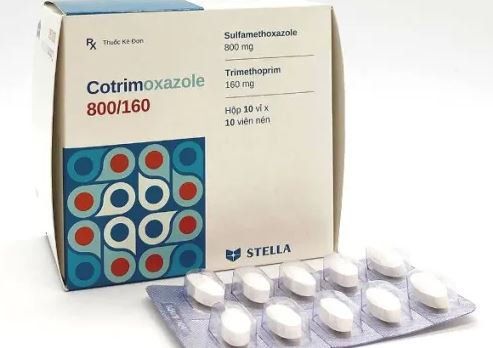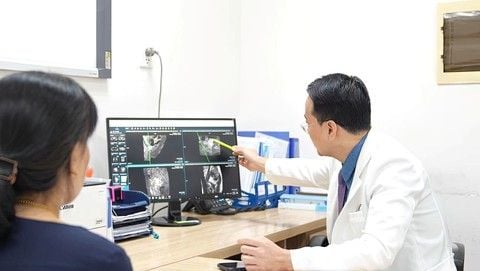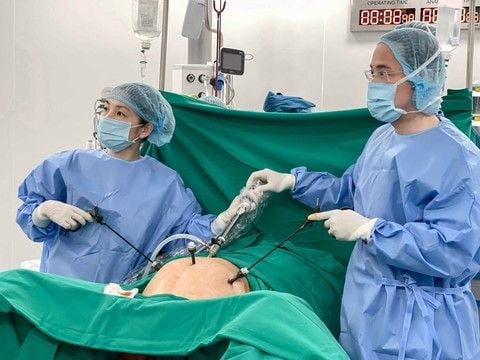During childbirth, the vagina must stretch to allow the baby to be born. Sometimes, during labor, your midwife or obstetrician may need to perform an episiotomy to create a larger opening in the vagina. Recovery from an episiotomy is usually quick; however, in the first few weeks, it may make it difficult for you to move. What is the best sitting position for you after an episiotomy?
1. What is an episiotomy?
The vagina and perineum (the area between the vagina and the anus) are very elastic. During the process of delivering your baby, they need to stretch to allow the baby to be born. Sometimes, during labor, your midwife or obstetrician may need to perform an episiotomy to create a larger opening in the vagina. This is called an episiotomy.
The cut will be stitched up by the midwife or obstetrician after delivery. An episiotomy is not performed in every labor, only when necessary. It is done if additional assistance is needed to deliver the baby or to prevent tearing of the muscles and skin. This is often seen in first-time vaginal deliveries.
2. Reasons for an episiotomy
You may need an episiotomy if:
- The baby's heart rate is too fast or too slow (sometimes referred to as “fetal distress”) - this may be a sign that your baby is not getting enough oxygen
- Your obstetrician or midwife needs to widen your vagina - this may be necessary if they plan to use instruments such as forceps or a vacuum to assist with delivery
- You are delivering a breech baby - this means the baby is coming out feet or buttocks first.
- Your baby is large.
- You have certain medical conditions, such as heart disease, and your doctors have advised that your labor should progress as quickly as possible.
- You have been pushing for a while and are exhausted.

3. Pain relief after an episiotomy
Talk to your midwife or obstetrician about the options you have to manage any pain you may experience. While it is normal to feel pain after an episiotomy, it would be unusual for this pain to last longer than 2 weeks.
Analgesics: Paracetamol tablets can really help relieve pain and are safe to take. The usual recommended dose is two 500 mg tablets every 6 hours. This is safe to do while you are breastfeeding. Diclofenac in tablet or suppository form is also an effective pain reliever. Suppositories are inserted into your rectum. They have a longer-lasting effect and are given every 18 hours. Your midwife will show you how to use the suppositories.
Aspirin is not recommended as it can be passed to your baby through breast milk.
Your obstetrician may prescribe pain relief medication for you while you recover in the postnatal care area. When you go home, if paracetamol and diclofenac do not help relieve your pain, talk to your midwife or family doctor. They may need to check you in case the area has become infected. Signs of infection include:
- Yellow or green discharge
- Significant redness
- Severe pain or tenderness
Let them know if you are breastfeeding, as some medications are not suitable for use while breastfeeding.
Other tips to help manage pain:
- Rest and lie on your side as much as possible.
- Apply a cold pack or ice wrapped in a towel to the wound. Do this for 20 to 30 minutes at a time a few times a day. Rest for at least an hour between ice applications. Especially in the first 3 days, using a cold pack can really help reduce swelling and inflammation around the wound.
- When sitting, using a donut-shaped cushion can help you feel more comfortable.
Another tip when sitting is to squeeze your buttocks together. This reduces some pressure on the wound. - Taking a warm bath can help you feel more comfortable and give you a chance to relax.
- Some women use ‘Arnica.' This popular herbal remedy is said to promote wound healing and reduce bruising. However, there is no convincing scientific evidence to prove that it works.

4. Sitting position after an episiotomy
4.1. Urination
Clean the perineum after each trip to the bathroom. Pour warm water over the vaginal area after you use the restroom. Pouring warm water over the outside of the vagina while you urinate can also help prevent stinging. When you are urinating, lean forward towards your knees. This helps direct the urine away from the wound. Your buttocks and back may feel slightly bruised after giving birth.
4.2. Bowel Movements
It is normal to feel anxious about the stitches when having a bowel movement. Don’t worry; straining during a bowel movement will not cause your stitches to come apart or the wound to reopen. There are things you can do to make bowel movements more comfortable.
- Place a clean pad against the wound and apply gentle pressure when you have a bowel movement. This can help reduce some pressure on the wound.
- Gently wipe your bottom from front to back. This helps prevent bacteria from infecting the wound.
- Try to avoid constipation. Drink plenty of water. Eat high-fiber foods, including vegetables, fruits, whole grain oats, whole grain bread, and pasta.
- Using a stool softener can be helpful. Stool softeners are medications used to treat constipation. They can soften the stool, making it easier to pass.
4.3. Sexual intercourse after an episiotomy
There are no strict guidelines on when to resume sexual intercourse after giving birth. Some experts suggest waiting until the bleeding has stopped to reduce the risk of infection. Take everything at your own pace. It is normal for sex to feel a bit different after giving birth. Remember that you can become pregnant again right after giving birth. If this is not what you want, talk to your healthcare provider about contraception. Most women find that the first time they have sex after an episiotomy is uncomfortable. If you try to have sex before the episiotomy or any other tears have healed, you may experience significant pain.

After the wound has healed, if you initially feel pain, don’t worry. This is quite normal. The pain will improve over time. Communicate your feelings to your partner. If intercourse is uncomfortable, let them know.
If you are breastfeeding, your vagina may feel drier than usual. This can make intercourse uncomfortable or even painful. Your sex drive may be lower due to hormonal changes.
Trying different positions can sometimes help alleviate discomfort. You may need to explore alternatives to penetration, such as oral sex or mutual masturbation for a while.
Engage in sexual activity when you are not too tired. If you do not feel like having sex or you are worried that it will hurt, be open with your partner about your feelings.
4.4. Pelvic Floor Exercises
Performing pelvic floor exercises can:
- Strengthen the muscles around your vagina and anus
- Reduce the risk of issues with bowel and bladder control
- Improve blood flow to the area
- Help the wound heal faster
- Reduce pressure on the wound and the surrounding skin
If you need consultation and examination at Vinmec Hospitals across the nationwide healthcare system, please schedule an appointment on the website (vinmec.com) for assistance.
To arrange an appointment, please call HOTLINE or make your reservation directly HERE. You may also download the MyVinmec app to schedule appointments faster and manage your reservations more conveniently.








